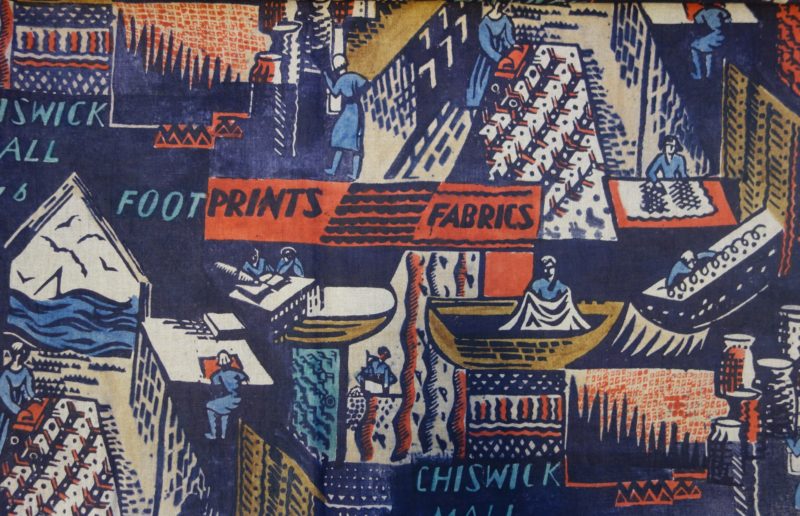What is the working title of your dissertation?
Currently my working title is ‘“Embroidered in Dyes”: Fabrics and Fashions by the Footprints Textile Printing Workshop in London 1925–1939’.
What led you to choose this subject?
Our amazing tutor Rebecca Arnold informed me about the Joyce Clissold and Footprints archive at the Central Saint Martins because she knew I am particularly interested in textiles and the making of dress. I visited this archive in February and immediately fell in love with the Footprints designs and Joyce Clissold’s work as a designer-craftswoman. I especially appreciate the broad perspective on fashion that the archive gave me, as it contains a wide range of objects that illustrate the diverse processes of designing, making, advertising and retailing of fabrics as well as garments. In the course of the research process, I became more and more intrigued by the creative activity of the many individuals and loosely knit groups of craftsmen and -women in London in the 1920s and 1930s. It would be a dream to continue my research in this exciting field.

Favorited book/article you’ve read for your dissertation so far and why?
I could spend hours at the British Library reading the beautifully-designed journal The Town Crier. Issued by the Merchant Adventurers in London from 1921, this journal was full of interesting crafts-related articles and advertisements, as well as for instance job requests and vacancies by or aimed at established or aspiring craftspeople. The journal was printed on this nice, thick paper. I enjoy just leafing through it, read all the fun ads, and explore interwar London in my mind.

Favorited image/object in your dissertation and why?
I think I already gave my favourite images away in my last blog, as I love both the cover of the Footprints leaflet and the photograph of Joyce Clissold wearing a scarf of her own design.
But perhaps I can share my favourite ‘object’ with you. It is a reference in British Vogue’s 17 May 1933 issue to the Footprints shop that was located in New Bond Street. After spending almost two days at the British Library, leafing page-by-page through 1930s issues without any previous indication or even guarantee that I would find anything relating to Footprints, I could hardly suppress my euphoria when I actually found a short reference in the magazine’s regular shopping column. I felt like a kind of dress historian-detective…
Favorited place to work?
The most beautiful place to work is the National Art Library at the Victoria and Albert Museum. It is my dream library. It reminds me of that library in Disney’s animated film Beauty and the Beast. But I also enjoy drinking coffee whilst working, for which I often go to Bloomsbury Coffee House at Tavistock Place.
By Nelleke Honcoop







